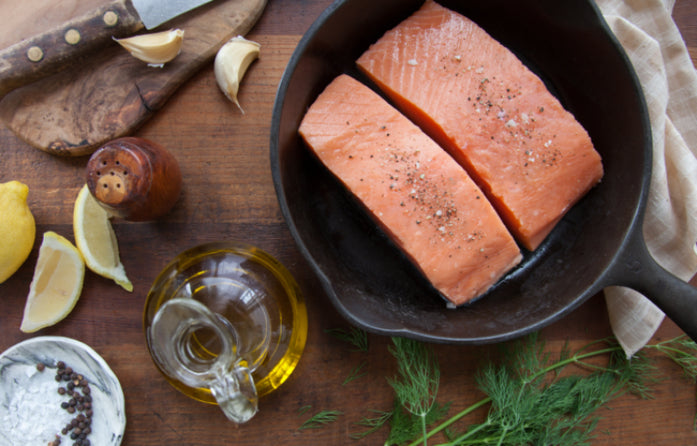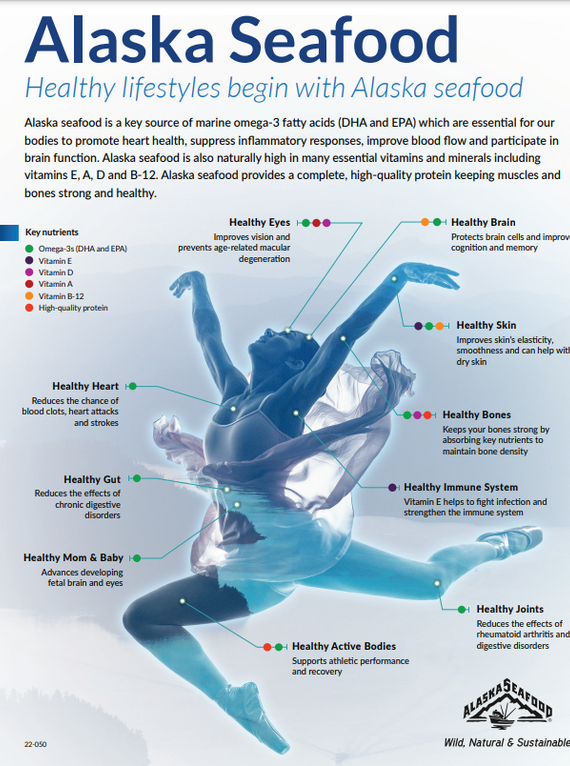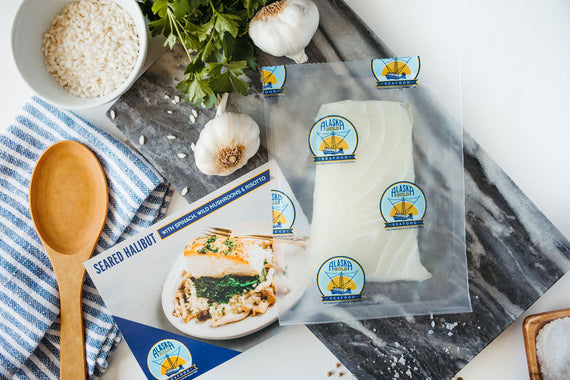
A healthy diet rich in wild salmon is important to our customers and us.
More and more of our customers are coming to find us seeking the anti-inflammatory properties that seafood high in Omega-3s, like our wild salmon, sablefish and albacore tuna have. Evidence is accumulating that suggests inflammation plays a major role in some of the most serious diseases of our time—heart disease, Alzheimer’s Disease, and many forms of cancer. The Omega-3s EPA and DHA found in fatty fish found in cold water like wild salmon and sablefish help to maintain healthy blood vessels and may reduce chronic inflammation throughout the body. This inflammation potentially leads to negative health conditions like heart disease. In addition, most arthritis associations recommend the use of fish loaded with omega-3 fatty acids such as wild salmon as both as a supplement and an alternative to conventional arthritis medications because of the anti-inflammatory properties of fatty fish. It is no wonder that people seek out seafood as part of their anti-inflammatory diet! (Berries, cruciferous vegetables and green tea are some of the other foods also associated with anti-inflammatory properties.) With more than 2000 studies looking at omega-3s and their relation to heart health, it’s becoming clearer that there is a positive correlation between increased omega-3 intake and benefits to heart health.
There is also evidence that seafood high in omega-3s can relieve stress. “The omega-3 fatty acids in salmon have anti-inflammatory properties that may help counteract the negative effects of stress hormones,” such as adrenaline and cortisol, says Lisa Cimperman, RD, of the University Hospitals Case Medical Center and a spokesperson for the Academy of Nutrition and Dietetics.
Nutrients less frequently mentioned in conjunction with wild salmon are vitamin D, iron, and zinc. Seafood is one of the few naturally-rich food sources of vitamin D, a fat-soluble vitamin involved in calcium metabolism and bone health and responsible for repair and maintenance of the body. Vitamin D also helps to regulate cell growth, decrease inflammation, and maintain healthy immune function.
Some other benefits of wild salmon include their protein and amino acid content. Wild salmon contains bioactive peptides, which are bioactive protein molecules that may provide special support for joint cartilage, insulin effectiveness, and control of inflammation in the digestive tract. Calcitonin, one of these bioactive peptides, is a key hormone that regulates and stabilizes the balance of collagen and minerals in bones and surrounding tissue, which means that its potential of reducing joint inflammation is great.
Our health-conscious customers have been concerned about contaminants in the sea, and rightfully so. But wild salmon runs in Southeast Alaska have been evaluated for contaminant consumption risk for dioxins and PCBs, in addition to Fukushima radiation, and these salmon runs have been found to be some of the lowest category risk for wild salmon consumption.
The benefits of eating wild salmon are overwhelming. Our line-caught wild salmon are particularly loaded with nutrients, as they are by definition actively feeding, which means that they will be higher in omega-3 fatty acids than fish caught closer to terminal areas. In addition, our sablefish are loaded with even more Omega-3s than wild salmon and a significant source of vitamin D.



